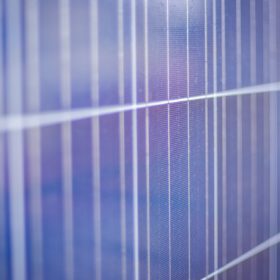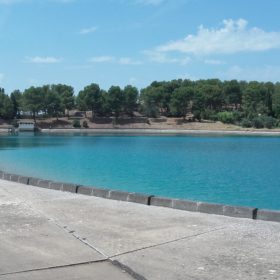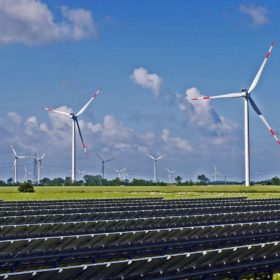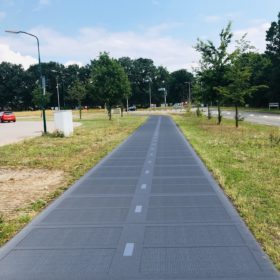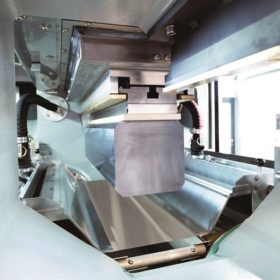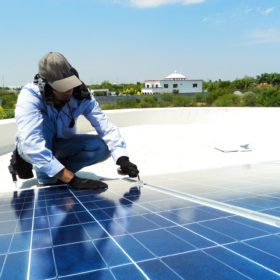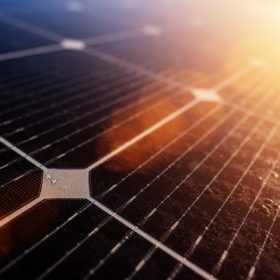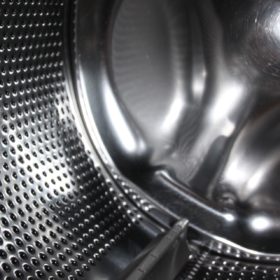Getting the right module temperature with thermography
Researchers from Hungary have analyzed the thermal behavior of different types of PV module via thermography, and claim to have shown that theoretical models are insufficient to measure the maximum, minimum, and average temperatures of the panels. According to their analysis, glass-glass modules without frame showed the highest temperatures, while the lowest temperatures were measured for polycrystalline glass-backsheet panels with frame.
Testing floating PV with tracking systems
French water management agency Société du Canal de Provence (SCP) is planning an innovative floating project to test its combination with a solar tracking system. The 250 kW project was awarded a fixed tariff in a special tender for innovative PV projects held by The French Energy Regulatory Commission (CRE) in February 2018. The plant will be deployed on a water surface managed by SCP in Southern France.
Choosing the best site for wind and solar with fuzzy logic
An international research team is proposing a fuzzy logic approach for optimal site selection of large-scale wind, solar and hybrid wind-solar power projects. The new methodology is based on criterial components for energy optimization through climatological, topographic and human factors.
Construction begins on pilot solar bike lane in the Netherlands
The electricity generated by the PV panels will be used to power the surrounding lighting system, as well as to heat the lane in winter to prevent road slipperiness caused by snow, ice or water. The project is part of a plan by the Dutch government to test the viability of solar power production on road infrastructure.
A new manufacturing process for cheaper CdTe panels
US researchers have unvelied a new manufacturing process to produce cadmium telluride (CdTe) PV panels, which they claim is 45% cheaper than current industry standards. The technique relies on the use of a high-pressure Bridgman furnace, which is a kind of industrial furnace utilized for crystal growth and directional solidification of polycrystalline ingots.
MIT researchers put slimmer silicon back on the table
With solar grade polysilicon prices having plummeted in recent years, cutting down on consumption of the material has not been a priority. But strategies exist and significant savings can be made through deploying thinner wafers that use less silicon, insists a new paper published by MIT and NREL. And as manufacturers are increasingly hitting dead ends on other routes to cost reduction, this option could be back on the table for many.
A new technique to get the right angular-tilt
UK scientists are proposing a new approach to calculating the optimum angular-tilt of PV panels for a planar surface at a particular site. In their view, the new technique may unlock innovative yield optimization methods for the installation of PV systems.
Raising the efficiency of polycrystalline cells with new luminescent EVA film
Chinese researchers have developed a pure EVA film, which they claim can enhance the conversion efficiency of conventional crystalline solar cells by around 0.50%. The film is able to convert UV light into strong visible light.
ERA-Net awards 23 future energy pilot projects across Europe
Under the umbrella of the European Union’s Horizon 2020 initiative, the research platform ERA has initiated a new batch of future energy projects. Looking at the list of winning projects, it is easy to tell that hydrogen, virtual power plant, and blockchain projects are really at the center of what Europe thinks will be important for its net-zero carbon plans by 2050.
How much can you wash a wearable PV device?
UK researchers claim to have proved the viability of wearable photovoltaic devices as an integrated part of regular clothing. A solar-powered fabric textile was created by embedding micro-crystalline silicon solar cells within the fibers of a textile through thin copper wires. The scientists claim that the device can maintain its performance even after 15 domestic machine cycles, 25 hand wash cycles, and 6000 abrasion cycles.
